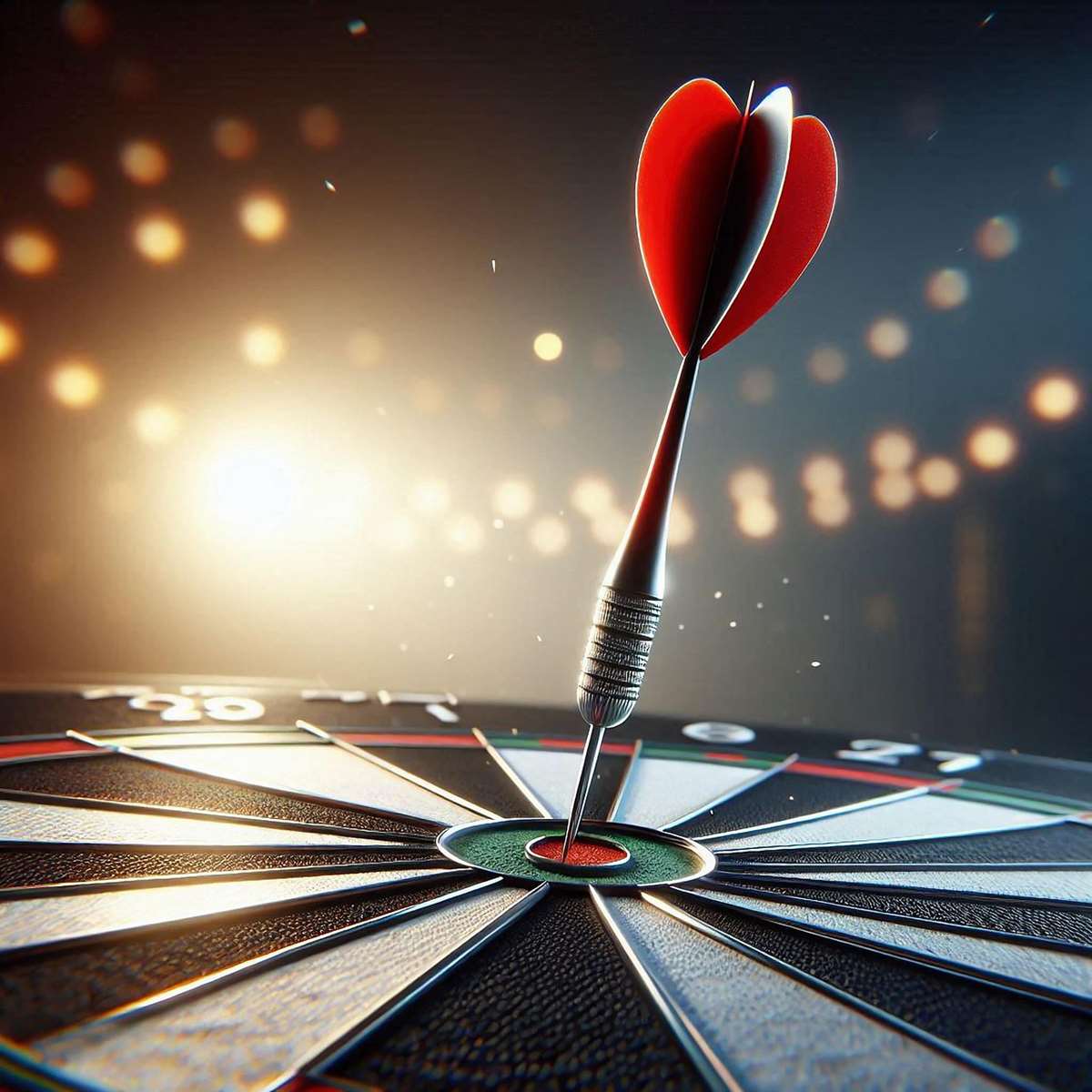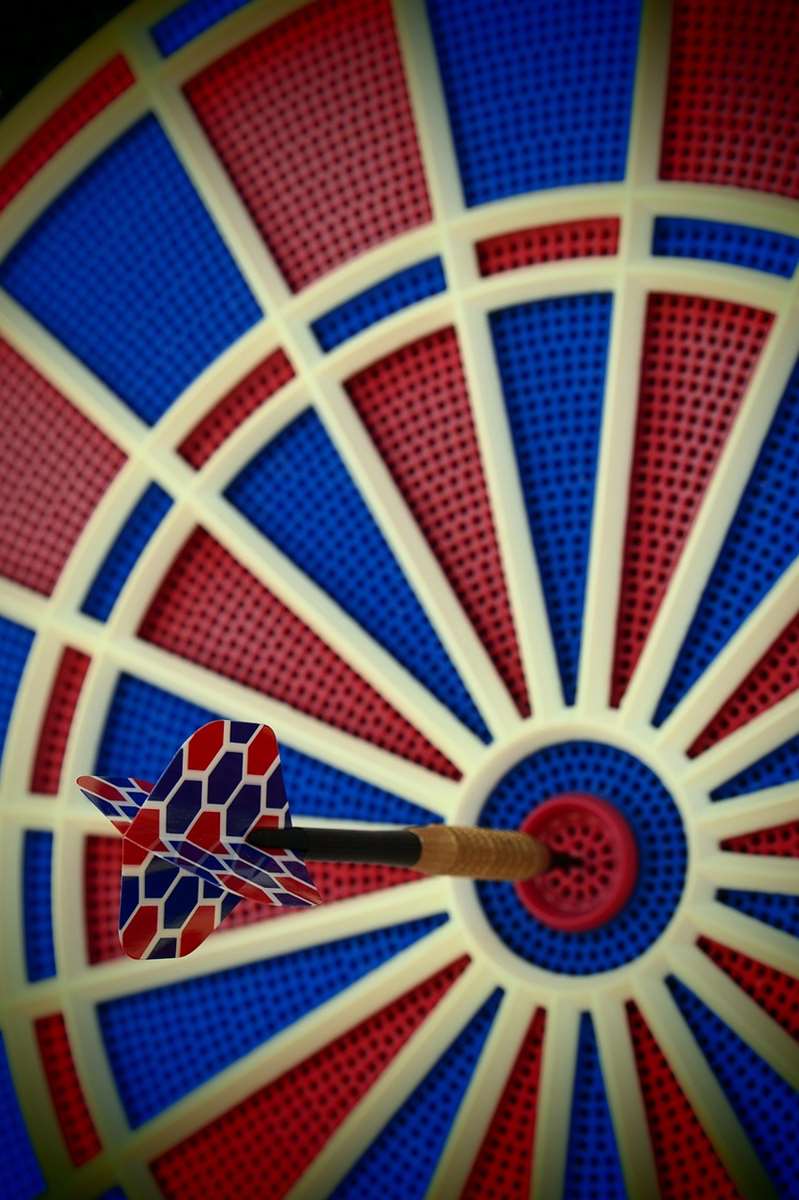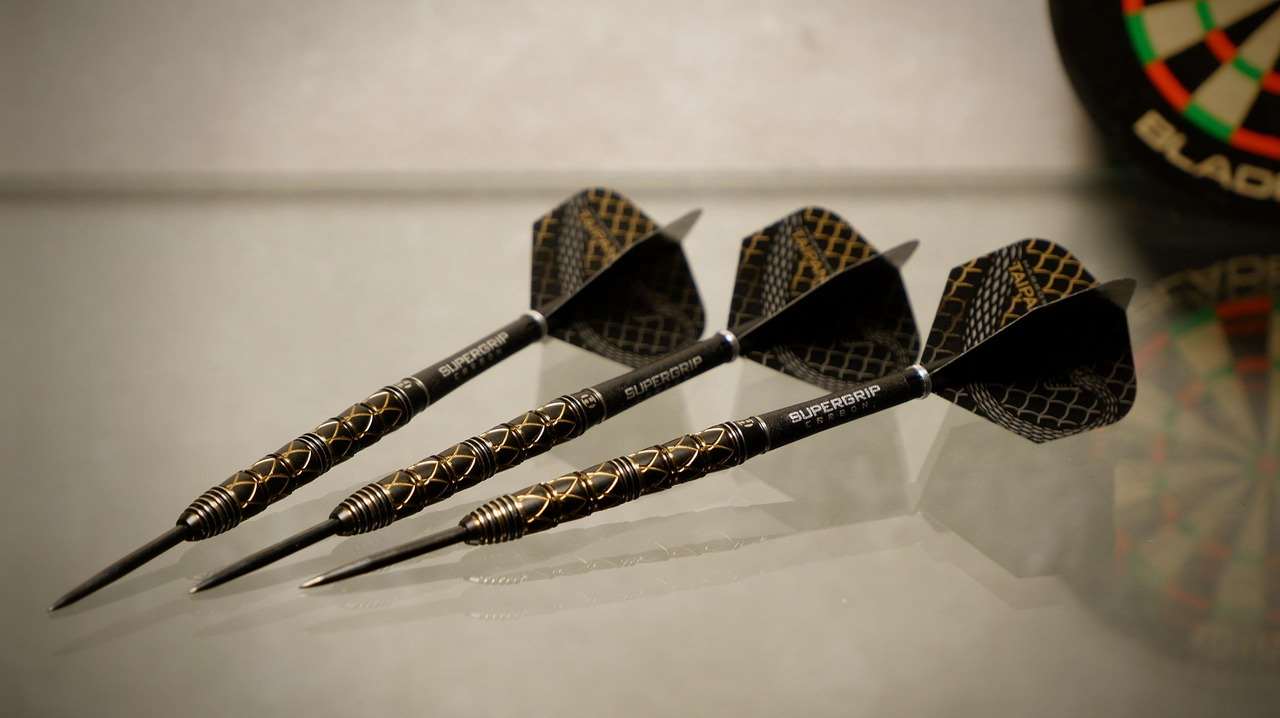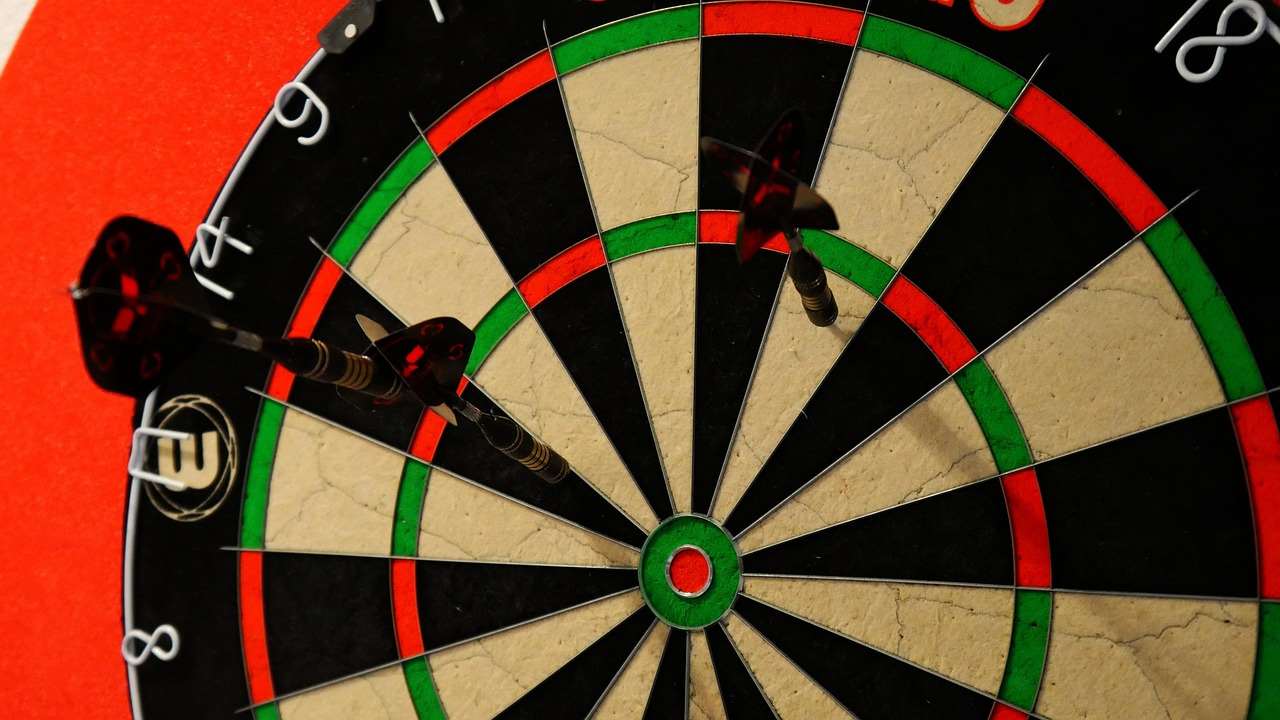Choosing the right dart flights is crucial for accuracy and consistency, and understanding the difference between **dart flights no 2 vs no 6** is a great starting point. Generally, No. 2 flights are smaller, offering less drag and faster speeds, while No. 6 flights are larger, providing more stability. This article will explore these differences in detail, helping you determine which flight suits your throwing style best, as well as cover related aspects like flight materials, shapes and how they impact dart performance.
⚠️ Still Using Pen & Paper (or a Chalkboard)?! ⚠️
Step into the future! The Dart Counter App handles all the scoring, suggests checkouts, and tracks your stats automatically. It's easier than you think!
Try the Smart Dart Counter App FREE!Ready for an upgrade? Click above!
Understanding Dart Flight Sizes: No 2 vs No 6
The numerical designation of dart flights, like **no 2 vs no 6**, refers to their shape and, consequently, their size and surface area. While there are other flight shapes available, these two are among the most common, and understanding their properties is fundamental to selecting the optimal flight for your dart setup. The difference in size directly impacts the dart’s flight characteristics, affecting its speed, stability, and trajectory.

Dart Flights No 2: Characteristics and Benefits
**No. 2 dart flights** are known for their streamlined design, making them smaller and lighter than their No. 6 counterparts. This smaller size translates into several distinct advantages:
- Increased Speed: Due to reduced surface area, No. 2 flights experience less drag, allowing the dart to travel through the air at a faster velocity.
- Flatter Trajectory: The increased speed often results in a flatter trajectory, making them suitable for players who prefer a more direct throw.
- Suitable for Heavier Darts: Players using heavier darts may find No. 2 flights advantageous as they can help to stabilize the dart without adding excessive drag.
These flights are a popular choice among experienced players who have a consistent throwing style and prefer a faster-moving dart. They can be particularly effective for players who generate a lot of power in their throw.
Furthermore, the reduced drag can also lead to tighter groupings on the dartboard if your throwing technique is sound. It’s worth experimenting to see if **smaller flights** improve your overall score.
Dart Flights No 6: Characteristics and Benefits
On the other hand, **No. 6 dart flights** are larger and offer a greater surface area. This leads to a different set of characteristics:
- Increased Stability: The larger surface area creates more drag, resulting in greater stability in flight. This can be beneficial for players who struggle with wobble or inconsistency.
- Arcing Trajectory: The increased drag often leads to a more arcing trajectory, requiring a slightly different aiming point.
- Suitable for Lighter Darts: Players using lighter darts may find No. 6 flights helpful in providing the necessary stability to prevent the dart from veering off course.
Newer players, or those still developing their technique, often find that No. 6 flights offer more forgiveness. The increased stability can help to compensate for minor inconsistencies in the throw. It can also increase your **30 dart leg average**.

Factors to Consider When Choosing Between Dart Flights No 2 vs No 6
Selecting the right dart flight isn’t just about size; several factors play a role in determining which flight will work best for you. Let’s explore some of the most important considerations.
Dart Weight and Balance
The weight and balance of your darts significantly impact the type of flight that will perform optimally. As mentioned earlier, heavier darts often pair well with No. 2 flights, while lighter darts tend to benefit from the stability of No. 6 flights. Experimenting with different combinations is key to finding the perfect match. If you are finding your dart veers off course, you might need to consider flight size or **shooting darts** technique.
Throwing Style and Technique
Your individual throwing style is another crucial factor. Players with a smooth, consistent release may find that the speed and flatness of No. 2 flights complement their style. Conversely, players who generate a lot of spin or have a less consistent release may find that No. 6 flights provide the necessary control. It’s all about finding the flight that works *with* your natural tendencies. Have you heard the **darts 180 sound clip** after throwing with your darts? That is your reward.
Shaft Length and Material
The length and material of your dart shafts also play a role in overall dart performance. Longer shafts generally provide more stability, while shorter shafts offer more maneuverability. Combining different shaft lengths with various flight sizes can fine-tune your dart’s flight characteristics. Consider the impact of using a **darts bomb barrel** as this changes the weight and how the darts move.
Personal Preference and Experimentation
Ultimately, the best way to determine which flight is right for you is through experimentation. Try different flight sizes, shapes, and materials to see how they affect your dart’s flight and your overall accuracy. Don’t be afraid to adjust your setup until you find what works best for you. Remember to keep track of your scores when experimenting so you can make an informed decision. Perhaps the **Electronic dart score counter** (https://dartcounterapp.com/) can help with this.

Beyond Size: Other Flight Considerations
While the size difference between **dart flights no 2 vs no 6** is a major factor, there are other aspects of dart flights that can also impact performance. These include flight shape, material, and durability.
Flight Shape: Standard, Kite, Slim, and More
Beyond the numerical designations, dart flights come in a variety of shapes, each offering slightly different flight characteristics. Standard flights, similar to No. 6 in size, provide maximum stability. Kite flights offer a balance between stability and speed. Slim flights, resembling No. 2 in profile, are designed for speed and reduced drag. And there are other more specialized shapes too. Understanding the nuances of each shape can help you further refine your dart setup.
Flight Material: Plastic, Nylon, and Polycarbonate
Dart flights are typically made from plastic, nylon, or polycarbonate. Plastic flights are the most affordable but are also the least durable. Nylon flights offer a good balance of durability and affordability. Polycarbonate flights are the most durable and offer consistent performance but are also the most expensive. The choice of material depends on your budget and how frequently you play.
More durable flights could save you in the long run if you are consistently playing **darts u13** upwards!
Flight Durability and Maintenance
Regardless of the material, dart flights will eventually wear out and need to be replaced. Regularly inspect your flights for tears, bends, or other damage. Replace damaged flights promptly to maintain consistent dart performance. Using flight protectors can help extend the life of your flights by preventing damage from impacts. Keep a spare set of flights with you at all times so you can replace them immediately if needed.
Common Flight Problems and Solutions
Even with the right flights, you may encounter common problems that affect dart performance. Understanding these problems and their solutions can help you troubleshoot issues and improve your game.
Dart Wobbling or Fishtailing
If your darts are wobbling or fishtailing in flight, it could be due to several factors. The flights may be damaged, the shaft may be loose, or your grip may be inconsistent. Check your flights for damage and replace them if necessary. Tighten your shafts and focus on maintaining a consistent grip. If the problem persists, try experimenting with different flight sizes or shapes.

Dart Deflecting or Bouncing Out
Darts deflecting or bouncing out of the board can be frustrating. This could be due to dull dart points, damaged flights, or a low-quality dartboard. Sharpen your dart points regularly. Replace damaged flights. And consider investing in a higher-quality dartboard with thinner wiring to reduce deflections. You might also want to check your **darts setup distance**.
Grouping Issues
If you are struggling to group your darts consistently, it could be due to inconsistent release, improper dart weight, or the wrong flight type. Focus on maintaining a smooth and consistent release. Experiment with different dart weights to find what feels most comfortable. Try different flight sizes and shapes to see if they improve your grouping. Consider checking how **darts bull score** values differ in various competitions.
Advanced Dart Flight Techniques
Once you’ve mastered the basics, you can explore advanced techniques to further optimize your dart setup and throwing style.
Flight Rotation
Some players use flight rotation to fine-tune their dart’s trajectory. By slightly rotating the flights, you can adjust the dart’s angle of attack and influence its flight path. This technique requires a lot of practice and experimentation but can be a valuable tool for experienced players.

Using Flight Protectors
Flight protectors are small accessories that attach to the back of your flights to prevent damage from impacts. They can significantly extend the life of your flights, saving you money in the long run. There are various types of flight protectors available, so experiment to find the ones that work best for you.
Combining Flights and Shafts for Optimal Performance
The key to maximizing dart performance is finding the right combination of flights and shafts. Experiment with different combinations to see how they affect your dart’s flight and your overall accuracy. Keep detailed records of your results so you can make informed decisions about your setup. Be on the lookout for **target darts launch 2022** and beyond to see what’s new on the market.
You might also be interested to learn how professionals like **simon whitlock darts** perform.
Conclusion: Finding Your Perfect Flight
Choosing between **dart flights no 2 vs no 6** ultimately depends on your individual throwing style, dart weight, and personal preference. No. 2 flights offer speed and a flatter trajectory, while No. 6 flights provide stability and an arcing trajectory. Experiment with different flight sizes, shapes, and materials to find the perfect combination for your game. Remember to focus on maintaining a consistent throwing technique and regularly inspect your flights for damage. By understanding the nuances of dart flights, you can optimize your setup and improve your accuracy on the dartboard. Now, go out there, try some new flights, and aim for that elusive **darts 9 dart finish 2023**!
Hi, I’m Dieter, and I created Dartcounter (Dartcounterapp.com). My motivation wasn’t being a darts expert – quite the opposite! When I first started playing, I loved the game but found keeping accurate scores and tracking stats difficult and distracting.
I figured I couldn’t be the only one struggling with this. So, I decided to build a solution: an easy-to-use application that everyone, no matter their experience level, could use to manage scoring effortlessly.
My goal for Dartcounter was simple: let the app handle the numbers – the scoring, the averages, the stats, even checkout suggestions – so players could focus purely on their throw and enjoying the game. It began as a way to solve my own beginner’s problem, and I’m thrilled it has grown into a helpful tool for the wider darts community.